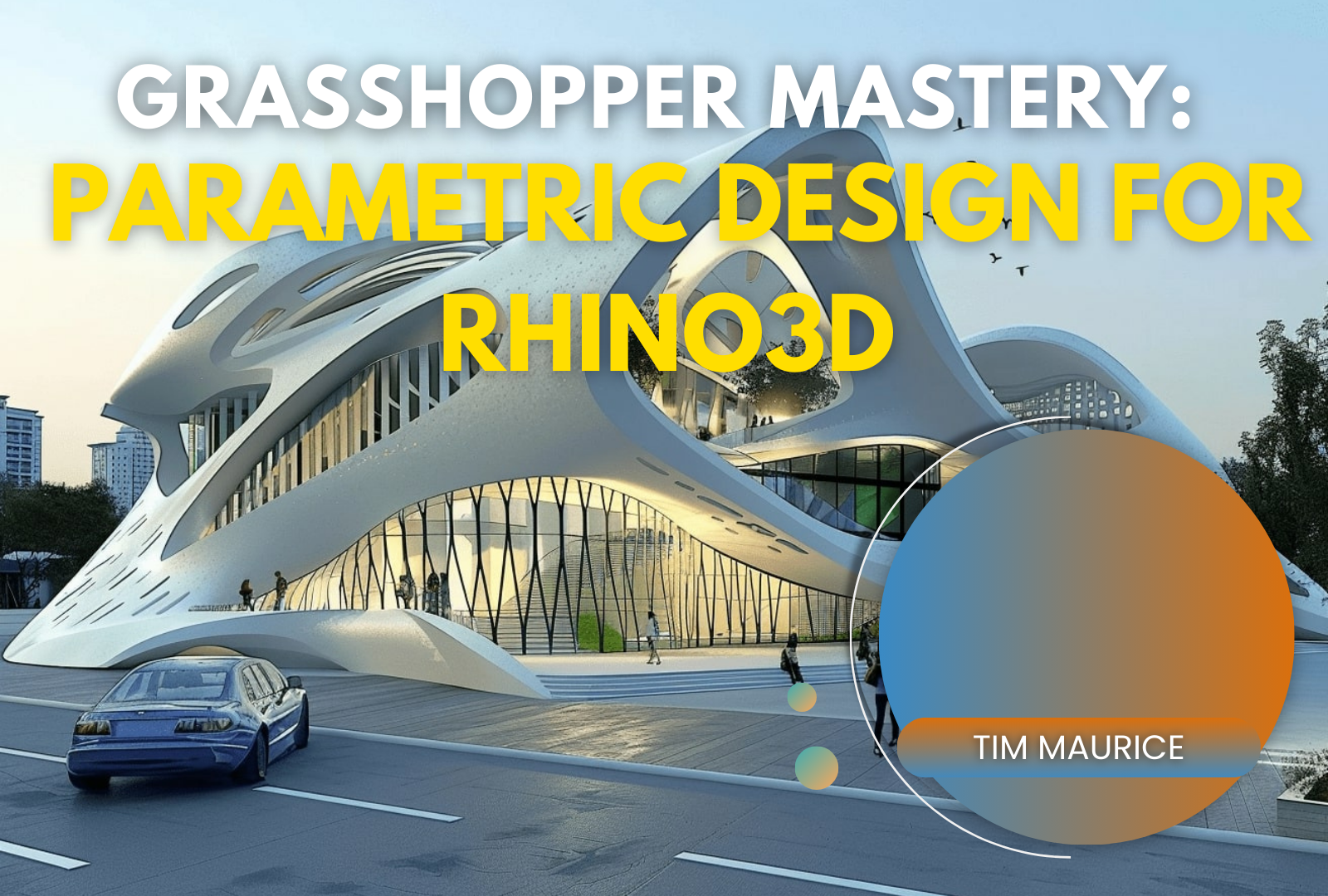Grasshopper Mastery: Parametric Design for Rhino3D
in General EducationAbout this course
Grasshopper Mastery: Parametric Design for Rhino3D
Master the Art of Parametric Design & Visual Scripting – No Coding Required!
🚀 Unlock the Power of Grasshopper & Rhino3D to Create Intelligent, Adaptive Designs 🚀
Are you an architect, designer, or engineer looking to take your 3D modeling skills to the next level? Do you want to create complex, parametric designs without writing a single line of code?
✅ Grasshopper is the game-changing tool that allows you to build dynamic, responsive models inside Rhino3D. This course will take you from complete beginner to an advanced parametric designer, step by step!
🔹 What You'll Learn
✔️ Master the Grasshopper Interface – Navigate like a pro & understand key components
✔️ Parametric Modeling Fundamentals – Create dynamic models with visual scripting
✔️ Data Structures & Automation – Work with lists, trees & manage complex datasets
✔️ Interoperability with Revit & Blender – Integrate your designs into advanced workflows
✔️ Paneling & Facade Design – Generate innovative facade patterns & structures
✔️ Fabrication & Digital Manufacturing – Prepare models for 3D printing & CNC milling
✔️ Visualization & Rendering – Present your projects with stunning visuals
🎯 By the end of this course, you will be able to:
- Create adaptive & automated 3D models
- Optimize designs for performance & fabrication
- Work seamlessly between Rhino3D, Grasshopper, & Revit/Blender
- Monetize your skills by offering freelance or professional design services
🔹 Who Is This Course For?
✅ Architects & Interior Designers – Looking to create algorithmic, generative designs
✅ Engineers & Fabricators – Who want to prepare models for construction & manufacturing
✅ Product & Industrial Designers – Seeking to enhance 3D workflows
✅ Students & Beginners – No prior coding experience needed!
💻 What’s Inside the Course?
✔️ 10+ In-Depth Modules covering every aspect of Grasshopper
✔️ Step-by-Step Written Lessons for easy understanding
✔️ Real-World Examples & Projects to apply your learning
✔️ Downloadable Grasshopper Files to practice & modify
✔️ Lifetime Access – Learn at your own pace, anytime, anywhere
🔥 Why Choose This Course?
🚀 Hands-On Learning: Practical exercises with instant feedback
🚀 Structured & Beginner-Friendly: No prior knowledge required
🚀 Industry-Ready Skills: Learn what top firms use in real-world projects
🚀 Certificate of Completion: Show off your new skills to clients & employers
🎯 Bonus: Free Access to Future Course Updates!
💰 Special Offer – Enroll Now!
📢 Limited-Time Discount – Get 50% Off Today!
🎓 Usual Price: $199 Now Only $99!
🔗 Enroll Now & Start Designing Smarter!
🚀 Join 1,000+ Designers Who Have Transformed Their Skills with This Course! 🚀
💡 Questions? Contact Us at support@digyprime.com
🔥 Don’t miss this opportunity to future-proof your design career! 🔥
Comments (0)
Summary of Chapter 1: Introduction to Grasshopper & Rhino3D Interface
Grasshopper is a **visual programming plugin** for Rhino3D that allows designers to create **parametric models** without traditional coding. Instead of manually adjusting designs, users build **logic-based scripts** using **graphical components**.
Key Takeaways:
✔️ **Rhino3D & Grasshopper Overview** – Rhino is a powerful CAD tool, and Grasshopper enhances it with automation and parametric design.
✔️ **Grasshopper Interface** – Components are connected visually on a **canvas**, replacing manual modeling with rule-based automation.
✔️ **Core Components & Data Flow** – Grasshopper uses **parameters, mathematical operations, transformations, and geometric tools** to create designs.
✔️ **First Project: Parametric Circle** – By using a **Number Slider** and a **Circle Component**, users can create a dynamically adjustable circle.
✔️ **Expanding with Plugins** – Tools like **Kangaroo, Weaverbird, and LunchBox** enhance Grasshopper’s capabilities.
Key Learning Outcome:
After this chapter, you should be familiar with **Grasshopper’s interface, how components interact, and how parametric design differs from traditional modeling.**
🔥 **Next Step:** Explore **Parametric Design & Visual Scripting** to start building **intelligent, algorithmic models**! 🚀







